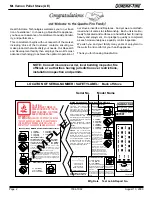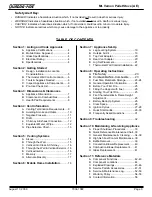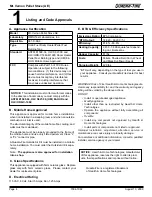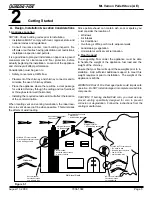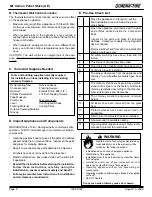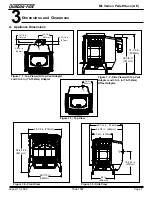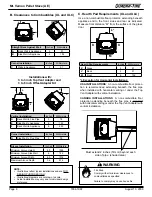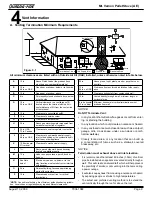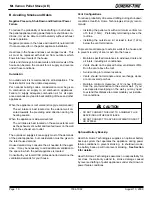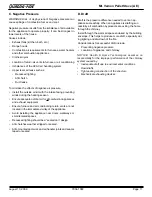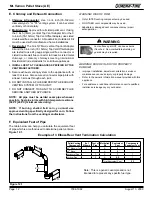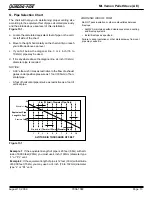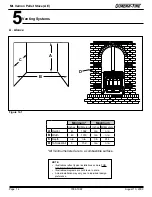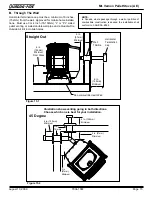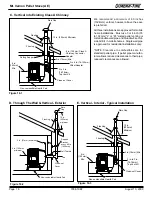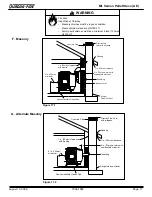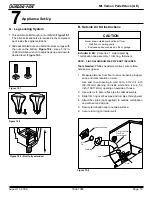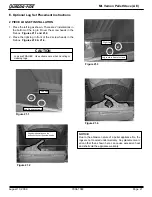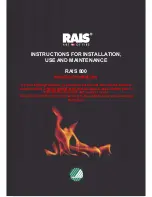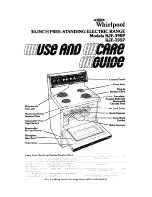
R
R
R
August 13, 2009
7034-106F
Page 11
Mt. Vernon Pellet Stove (AE)
Negative pressure results from the imbalance of air available
for the appliance to operate properly. It can be strongest in
lower levels of the house.
Causes include:
• Exhaust fans (kitchen, bath, etc.)
• Range hoods
• Combustion air requirements for furnaces, water heaters
and other combustion appliances
• Clothes dryers
• Location of return-air vents to furnace or air conditioning
• Imbalances of the HVAC air handling system
• Upper level air leaks such as:
- Recessed lighting
- Attic hatch
- Duct leaks
To minimize the effects of negative air pressure:
• Install the outside air kit with the intake facing prevailing
winds during the heating season
• Ensure adequate outdoor air for all combustion appliances
and exhaust equipment
• Ensure furnace and air conditioning return vents are not
located in the immediate vicinity of the appliance
• Avoid installing the appliance near doors, walkways or
small isolated spaces
• Recessed lighting should be a “sealed can” design
• Attic hatches weather stripped or sealed
• Attic mounted duct work and air handler joints and seams
taped or sealed
WARNING! Risk of Asphyxiation!
Negative pressure can
cause spillage of combustion fumes and soot.
C. Negative Pressure
Draft is the pressure difference needed to vent an ap
-
pliance successfully. When an appliance is drafting suc
-
cessfully, all combustion byproducts are exiting the home
through the chimney.
Install through the warm airspace enclosed by the building
envelope. This helps to produce more draft, especially dur
-
ing lighting and die-down of the fire.
Considerations for successful draft include:
• Preventing negative pressure
• Location of appliance and chimney
NOTICE:
Hearth & Home Technologies assumes no
responsibility for the improper performance of the chimney
system caused by:
• Inadequate draft due to environmental conditions
• Downdrafts
• Tight sealing construction of the structure
• Mechanical exhausting devices
D. Draft


